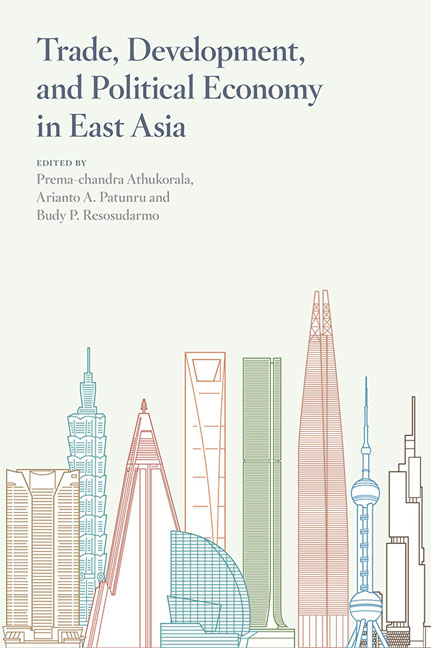Book contents
- Frontmatter
- Contents
- Tables
- Figures
- Contributors
- Foreword
- Acknowledgments
- Glossary
- 1 Introduction
- PART 1 TRADE
- 2 Challenges of the world trading system and implications for Indonesia
- 3 From spaghetti bowl to jigsaw puzzle? Addressing the disarray in the world trade system
- 4 Agricultural trade consequences of Asia's economic growth: a case study of wine
- PART 2 DEVELOPMENT
- PART 3 POLITICAL ECONOMY
- References
- Index
3 - From spaghetti bowl to jigsaw puzzle? Addressing the disarray in the world trade system
from PART 1 - TRADE
Published online by Cambridge University Press: 19 May 2017
- Frontmatter
- Contents
- Tables
- Figures
- Contributors
- Foreword
- Acknowledgments
- Glossary
- 1 Introduction
- PART 1 TRADE
- 2 Challenges of the world trading system and implications for Indonesia
- 3 From spaghetti bowl to jigsaw puzzle? Addressing the disarray in the world trade system
- 4 Agricultural trade consequences of Asia's economic growth: a case study of wine
- PART 2 DEVELOPMENT
- PART 3 POLITICAL ECONOMY
- References
- Index
Summary
INTRODUCTION
When Jagdish Bhagwati (1991) famously described the maze of overlapping free trade agreements (FTAs) as akin to a ‘spaghetti bowl’, it spawned a host of gastronomical metaphors, some more bizarre than others. When the action on FTAs switched to Asia in the 2000s (Figure 3.1), Richard Baldwin (2004b) dubbed it the ‘noodle bowl’. When attention shifted to how to rectify the mess and return order to the world trade system, lasagna and even pizza came onto the menu (Hamada, quoted in Bhagwati 2008). Turning the spaghetti or noodles into lasagna involves consolidating the bilateral FTAs into a regional bloc, while the pizza involves subsequently linking these regional blocs through cross-regional tie-ups, eventually achieving fully multilateral trade. Turning lasagna into pizza is a culinary feat that finds its parallel at the political level in turning the regional blocs into a multilateral one. But both the lasagna and pizza processes are probably better represented by the activity involved in solving different kinds of jigsaw puzzles, as this is what they more closely resemble.
While the success in Bali in securing a multilateral agreement on trade facilitation, although yet to be ratified, may have resuscitated the World Trade Organization (WTO), it also marked the death knell for the single undertaking. Given that the Doha Round can no longer be concluded as originally intended, these alternative processes—trying to solve the regional and global jigsaw puzzles—are likely to continue. The ASEAN+6 group—consisting of the 10 members of ASEAN plus Australia, China, Japan, Korea, India, and New Zealand—are attempting to create a consolidated bloc called the Regional Comprehensive Economic Partnership (RCEP) by 2015, in order to supersede the various ASEAN+1 FTAs and other internal bilateral FTAs between individual countries (see Menon 2013a). At the same time, the ASEAN countries are aiming to conclude the ASEAN Economic Community (AEC) with the same deadline. Around the world, the US and the EU are pursuing a Transatlantic Trade and Investment Partnership (TTIP), while the US is also leading a Trans-Pacific Partnership (TPP) southwards that includes seven RCEP members, amongst others. There are several other agreements in place or being pursued around the world.
- Type
- Chapter
- Information
- Trade, Development, and Political Economy in East AsiaEssays in Honour of Hal Hill, pp. 26 - 42Publisher: ISEAS–Yusof Ishak InstitutePrint publication year: 2014

